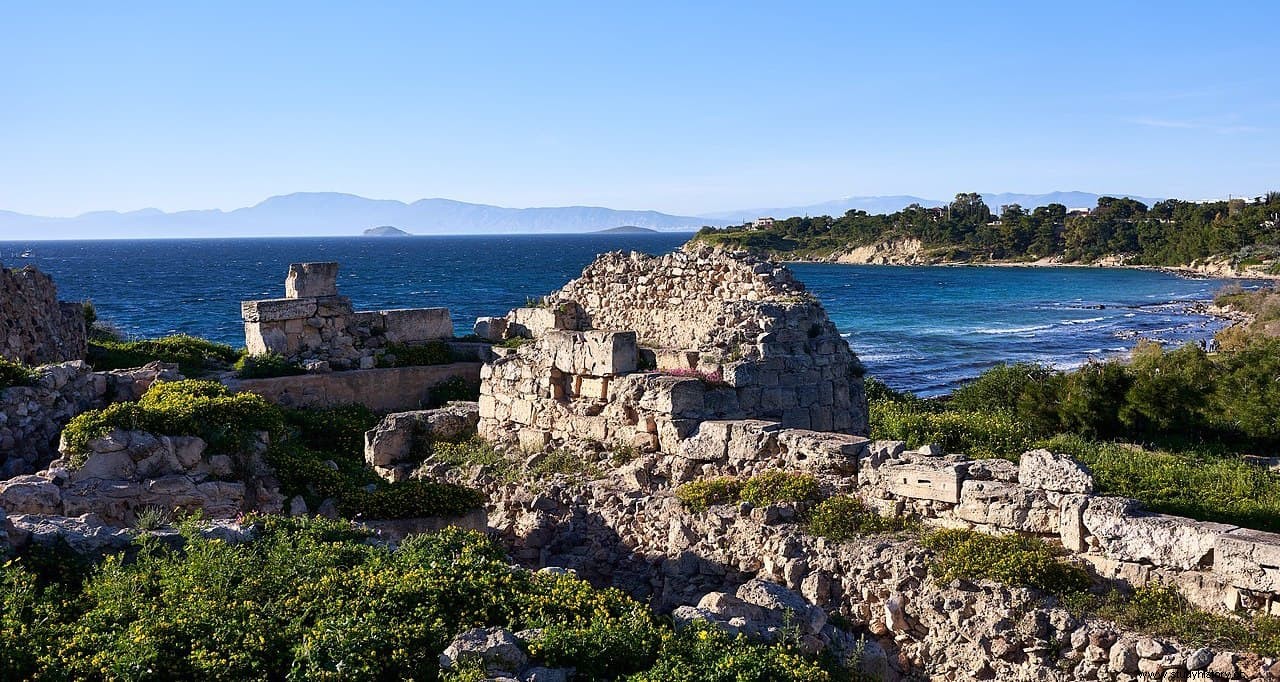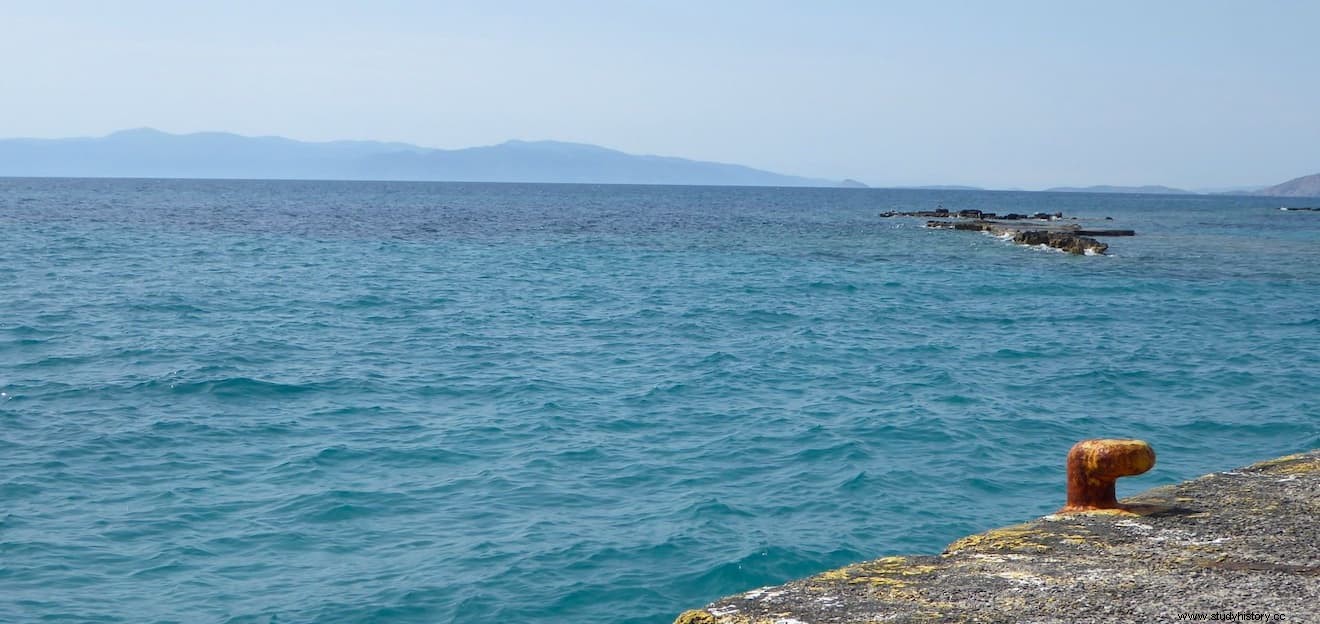The island of Aegina, located in the Saronic Gulf just 20 kilometers from Piraeus, is today a popular tourist destination that can be reached in less than an hour by ferry from Athens. But during practically all of Antiquity, the Aeginetans were staunch enemies of the Athenians, who were so close to them, and competitors in maritime trade.
To defend itself against foreign incursions, Aegina, which had the first navy in all of Greece, had a magnificent military port that was once unique in the Mediterranean, and whose ruins today lie semi-submerged at the foot of the island's acropolis next to the archaeological site of Kolona, on Avra beach.

For decades, tourists have been, and continue to be, diving at Avra Beach among the ruins of the ancient port, which the Greek geographer and historian Pausanias (writing in the 2nd century AD) referred to as secret port or hidden port (in Greek kryptos limin ).
The secret name It refers to the fact that only the locals knew of its existence, and how to navigate to it. Since to protect it there was a whole system of artificial reefs that made navigation difficult and made it dangerous for enemy ships and those who were unaware of their presence to enter.

Pausanias thought that this defensive system had been devised by Aeacus, the legendary first king of Aegina, throwing rocks into the sea . We can't know, but what archaeologists are sure of is that these rocks and reefs are not natural but man-made.
According to Despina Koutsoumba, an archaeologist at the Underwater Antiquities Department of the Greek Ministry of Culture, over time these medium-sized stones have merged together and indeed look like solid rocks . Even today ships entering the port of Aegina have to circumvent this barrier.

Aegina would contribute 30 ships to the battle of Salamis against the Persians, adding to the mighty Athenian fleet. However, Aeginetans and Athenians did not get along at all as we said at the beginning and, according to Herodotus, in order to face the Persians, the war between them had to cease.
That rivalry would lead to the destruction of Aegina, which had allied itself with Sparta, by the Athenians in 458 BC. It was forced to surrender its ships and dismantle its walls.
In the year 431 B.C. The entire population of the island was expelled and replaced by officials, military, and other Athenian citizens. The Aegeans took refuge in Tirea, where they were welcomed by the Spartans. With the defeat of Athens in 405 BC, after the battle of Aegospotami, they were able to return to their island.

Archaeologists currently working in the old port confirm that the remains can be seen from the surface of the sea, up to two or three meters deep. According to Despina Koutsoumba they are found in shallow water, and bathers can see them diving. The two turrets that blocked the entrance to the port with a large chain protrude slightly from the water. In addition, the sheds where the warships were kept are also visible.
On the other hand, the reefs and artificial breakwaters go into the sea, about 500 meters from the beach, and are submerged at a depth of about 9 meters.
